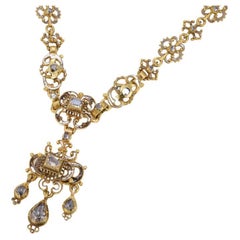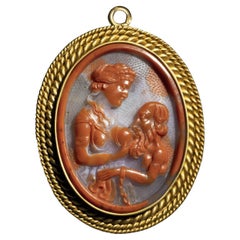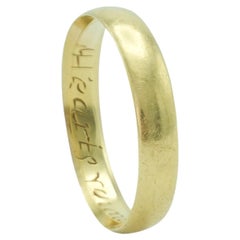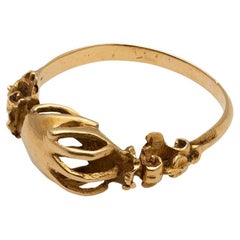Renaissance Jewelry
16th Century Italian Antique Renaissance Jewelry
Diamond, 18k Gold, Yellow Gold, Enamel
Late 17th Century European Antique Renaissance Jewelry
Sapphire, 18k Gold
16th Century Italian Antique Renaissance Jewelry
Agate, 18k Gold, Yellow Gold
16th Century British Antique Renaissance Jewelry
Rock Crystal, 22k Gold
17th Century European Antique Renaissance Jewelry
Gold, 18k Gold, Yellow Gold
16th Century European Antique Renaissance Jewelry
Gold, Yellow Gold
Early 1600s English Antique Renaissance Jewelry
16th Century Czech Antique Renaissance Jewelry
Gold, Enamel
15th Century and Earlier European Antique Renaissance Jewelry
22k Gold
Early 17th Century English Antique Renaissance Jewelry
Garnet, 22k Gold, Enamel
15th Century and Earlier European Antique Renaissance Jewelry
Gilt Metal, Mixed Metal, Niello, Silver, Copper
Early 18th Century Antique Renaissance Jewelry
Diamond, Sapphire, 14k Gold
16th Century European Antique Renaissance Jewelry
Agate, Gold, Enamel
16th Century French Antique Renaissance Jewelry
Crystal, Rock Crystal, Gilt Metal, Bronze, Copper
16th Century European Antique Renaissance Jewelry
Crystal, Rock Crystal, Silver
16th Century French Antique Renaissance Jewelry
Silver, Gilt Metal
16th Century Italian Antique Renaissance Jewelry
Crystal, Silver, Enamel, Copper, Gold
1620s Spanish Antique Renaissance Jewelry
Pearl, Gold, Enamel
17th Century Unknown Antique Renaissance Jewelry
Diamond, Gold, Enamel
17th Century European Antique Renaissance Jewelry
Onyx, Gold
16th Century European Antique Renaissance Jewelry
Rock Crystal, Gold
Early 17th Century Dutch Antique Renaissance Jewelry
Diamond, Gold
16th Century Antique Renaissance Jewelry
Silver, Niello
17th Century Italian Antique Renaissance Jewelry
Multi-gemstone, Pearl, 18k Gold, Enamel
16th Century Antique Renaissance Jewelry
Gold
16th Century Italian Antique Renaissance Jewelry
Agate, Rose Gold
Late 17th Century Italian Antique Renaissance Jewelry
Agate, Gold
16th Century Antique Renaissance Jewelry
Agate, Gold, Yellow Gold
16th Century German Antique Renaissance Jewelry
Diamond, Natural Pearl, Ruby, Gold, 14k Gold, 22k Gold, Enamel, Yellow Gold
16th Century Antique Renaissance Jewelry
Gold
16th Century Italian Antique Renaissance Jewelry
Gold
16th Century Italian Antique Renaissance Jewelry
Onyx, Gold
16th Century Unknown Antique Renaissance Jewelry
Diamond, Yellow Gold
17th Century Unknown Antique Renaissance Jewelry
Emerald, Yellow Gold
16th Century Italian Antique Renaissance Jewelry
Agate, Gold




